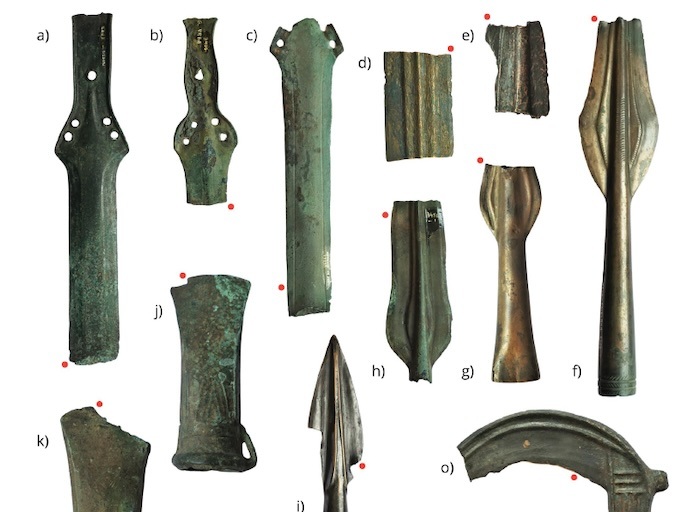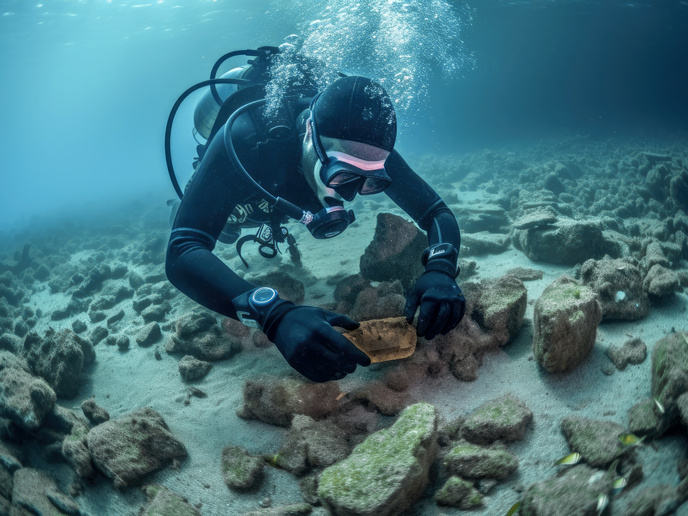Metal artefacts reveal patterns of movement in the Bronze Age
The Bronze Age in Europe and the Mediterranean (broadly 2500-1000 BC) was a time of immensely important changes in how people lived together, connected with each other and organised their material worlds. Societies shared pottery and burial styles, house designs and other examples of material design, across thousands of square kilometres. In south-eastern Europe, this included the Mycenaean palatial centres(opens in new window) in Greece (2 500-1 000 BC) and a newly discovered, contemporary network of mega-fort sites(opens in new window) in the Carpathian Basin. What caused the collapse of such a diverse and thriving culture is one of the consuming questions of archaeology. “It is generally agreed they collapsed in a short space of time, less than 100 years, after which most central places were abandoned and not replaced in the areas that had been the most prosperous and complex,” explains Barry Molloy(opens in new window), associate professor of Archaeology at University College Dublin(opens in new window) in Ireland. THE FALL project, led by Molloy with the support of the European Research Council(opens in new window), set out to see how this stressful period of change impacted on the daily life of everyday people, particularly in their movement.
Metalwork – a key indicator of patterns of change in the Bronze Age
Metalwork was the core economic link that bound the high and the low, not quite a proto-currency, but not far from it. Its dispersion leaves traces that can be indicators of movement and upheaval. Weaponry is a weathervane: it reveals trade routes, cultural influence and locations of conflict. “Economics aside, bronze was the core ingredient for military hardware and so tracing changes in weaponry is a really great proxy for tracing how people interacted both in terms of resourcing themselves for war and for waging it against perceived ‘others’,” says Molloy. The team used isotope(opens in new window) testing, along with analysis of burial goods and genetic evidence, to gain an insight into mobility across multiple generations. “We considered each cemetery population as building blocks forming a patchwork that makes up a pattern that reflects the complexity of Bronze Age societies,” adds Molloy. Ongoing work on these data shows remarkable stability in many areas during this period of turmoil, but with some notable exceptions.
Unexpected patterns of movement and communication
The project was able to ascertain that metal recycling was a feature of the period, something that had been debated. “We showed that people were really quite particular about it. It was OK to make a sickle from just about any metal you had around, but swords were treated as quite special. It seems only certain metal sources were used and this intriguingly appears to have commonly included the recycling of swords to make new swords.” The project also made a new discovery in the Carpathian Basin. While the Mycenaean palaces to the south in Greece have been the subject of study for years: “We began looking at Google Earth satellite imagery and soon discovered a massive network of over 100 unknown large sites in the Pannonian Plain.” Not only could the team see these from the satellite images, they could measure their size and the location of activity within them. “That is incredibly rare in archaeology for any period anywhere in the world.” The team visited the locations and were able to establish that they represented a hitherto unrecognised complex and populous society that was at its height from 1 500-1 200 BC.
Complex and productive relationships then, and also now!
Molloy found the human part of the project inspiring. That included the living and the dead, quite literally. “Despite the trials of COVID and the personal stresses this brought, our core team and our amazing network of collaborators, from Crete in the south to Serbia in the north, made the project so much more than generating new knowledge. It created new relationships and shared experiences that I believe were an inspiration to us all,” Molloy says.







